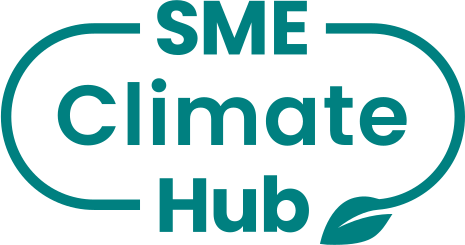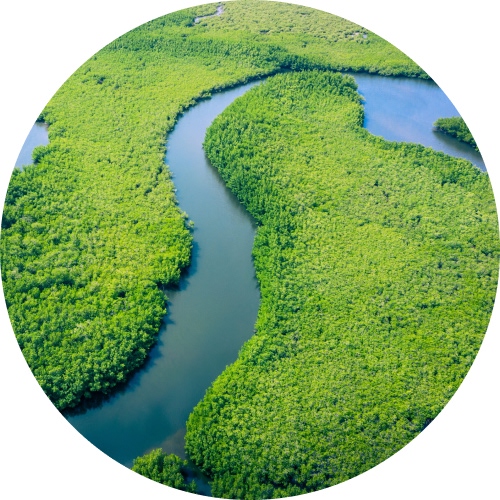See the steps your company can take towards a more sustainable future through our open resources.
I-Next Limited's Climate Report
Introduction *
Commitment And Targets *
Own emissions *
Value chain emissions *
(optional)Actions and plans to reduce emissions *
Climate Solutions *
(optional)Management and strategy *
(optional)Results, challenges and outlook *
Introduction *
reporting year
*2022
number of employees in the reporting year
*3
Commitment And Targets *
net zero target year
*2030
Base year
*2022
comment on your net zero targets
*We have set 2030 for net zero because it is aggressive and we are a small organisation which can meet aggressive targets.
near-term scope 1 target
*50
target year
*2025
near-term scope 2 target
*50
target year
*2025
near-term scope 3 target
*50
target year
*2025
comment on your near-term targets
*We believe we are on track for a halving of emissions by 2025, possibly earlier. As we implement a 100% renewable power policy for our services we reduced our scope 3 emissions which are our most signficant.
Own emissions *
scope 1 emissions
scope 1 emissions (metric tons co2e)
*1
own processes
*1
metric tons CO2escope 2 emissions
scope 2 emissions (metric tons co2e)
*11
total energy consumption (kwh)
*1330
renewable energy
*50
purchased electricity
*1
metric tons CO2eRenewable electricity (%)
50
purchased heating
*10
metric tons CO2eRenewable electricity (%)
50
Comment on your energy consumption
*We have very light direct electricity usage. Our heating usage is hindered by a split location, but we are exploring sustainable alternatives.
Value chain emissions (optional) *
scope 3 emissions
scope 3 emissions (metric tons co2e)
*2.5
supply chain related - upstream emissions
purchased goods and services
*2
metric tons CO2etransportation and distribution (upstream)
*0.05
metric tons CO2ebusiness travel
*0.45
metric tons CO2ecustomer related - downstream emissions
List any sources of emissions excluded:
*None
describe the calculation methodology and comment on accuracy:
*Normative calculator.
Actions and plans to reduce emissions *
Scope 1 Actions
own facilities
Yes
We will continue our policy of using refurbished equipment where possible.
own vehicles
N/A
We have no vehicles
own processes
Yes
We will extend our policy shifting meetings and customer training online.
scope 2 actions
purchased electricity
Yes
We will encourage the team to move to renewable energy providers where they aren't already.
purchased steam
N/A
N/A
purchased heating
Yes
We will explore alternative heating methods. We have been experimenting with sustainably fuelled heating in one location.
purchased cooling
N/A
N/A
scope 3 actions
supply chain related (upstream)
purchased good and services
*Yes
Our major purchase is data centre services. We have a programme in place to move to approved 100% reneawably powered data centres by the end of 2023.
capital goods
*N/A
N/A
fuel and energy related activities
*N/A
N/A
transportation and distribution (upstream)
*N/A
N/A
waste in operation
*N/A
N/A
business travel
*Yes
We will continue to move as much buisness travel to online alternatives as possible.
employee commuting
*Yes
We have no employee commuting at present and intend to continue that.
upstream leased assets
*N/A
N/A
customer related (downstream)
transportation and distribution (downstream)
*N/A
N/A
processing of sold products
*N/A
N/A
use of sold products
*N/A
N/A
end-of-life treatment of products
*N/A
N/A
leased assets (downstream)
*N/A
N/A
franchises
*N/A
N/A
investments
*N/A
N/A
i have asked my suppliers to halve emissions before 2030 and join the un-backed race to zero campaign
*Yes
percentage (%) of suppliers asked
*80
percentage (%) of suppliers committed
*40
i have communicated my commitment and actions to my business customers and asked them to join the un race to zero
*Yes
percentage (%) of business customers asked
*100
Percentage (%) of business customers committed
*25
Climate Solutions (optional) *
What percentage of your total revenue comes from sales of climate solutions?
*35
Provide descriptions/names of your climate solutions:
*Service hosting powered by 100% renewably powered data centres
Methodology used to assess these as climate solutions:
*When we made the climate commitment we looked at our scope 3 emissions as our primary scope. Our supply chain analysis showed that we didn't have a 100% renewably powered option for customers and so we set one up which accounts for the 35%. We have now committed to move all customers, at no cost to them, to 100% renewably powered systems.
How much of your research and development budget is allocated to climate solutions?
*100
are you investing in climate and/or nature outside your value chain?
*No
Management and strategy (optional) *
Results, challenges and outlook *

I-Next Limited's Climate Report
I-Next Limited's Climate Report - 2022
Introduction *
reporting year
*2022
number of employees in the reporting year
*3
Commitment And Targets *
net zero target year
*2030
Base year
*2022
comment on your net zero targets
*We have set 2030 for net zero because it is aggressive and we are a small organisation which can meet aggressive targets.
near-term scope 1 target
*50
target year
*2025
near-term scope 2 target
*50
target year
*2025
near-term scope 3 target
*50
target year
*2025
comment on your near-term targets
*We believe we are on track for a halving of emissions by 2025, possibly earlier. As we implement a 100% renewable power policy for our services we reduced our scope 3 emissions which are our most signficant.
Own emissions *
scope 1 emissions
scope 1 emissions (metric tons co2e)
*1
own processes
*1
metric tons CO2escope 2 emissions
scope 2 emissions (metric tons co2e)
*11
total energy consumption (kwh)
*1330
renewable energy
*50
purchased electricity
*1
metric tons CO2eRenewable electricity (%)
50
purchased heating
*10
metric tons CO2eRenewable electricity (%)
50
Comment on your energy consumption
*We have very light direct electricity usage. Our heating usage is hindered by a split location, but we are exploring sustainable alternatives.
Value chain emissions (optional) *
scope 3 emissions
scope 3 emissions (metric tons co2e)
*2.5
supply chain related - upstream emissions
purchased goods and services
*2
metric tons CO2etransportation and distribution (upstream)
*0.05
metric tons CO2ebusiness travel
*0.45
metric tons CO2ecustomer related - downstream emissions
List any sources of emissions excluded:
*None
describe the calculation methodology and comment on accuracy:
*Normative calculator.
Actions and plans to reduce emissions *
Scope 1 Actions
own facilities
Yes
We will continue our policy of using refurbished equipment where possible.
own vehicles
N/A
We have no vehicles
own processes
Yes
We will extend our policy shifting meetings and customer training online.
scope 2 actions
purchased electricity
Yes
We will encourage the team to move to renewable energy providers where they aren't already.
purchased steam
N/A
N/A
purchased heating
Yes
We will explore alternative heating methods. We have been experimenting with sustainably fuelled heating in one location.
purchased cooling
N/A
N/A
scope 3 actions
supply chain related (upstream)
purchased good and services
*Yes
Our major purchase is data centre services. We have a programme in place to move to approved 100% reneawably powered data centres by the end of 2023.
capital goods
*N/A
N/A
fuel and energy related activities
*N/A
N/A
transportation and distribution (upstream)
*N/A
N/A
waste in operation
*N/A
N/A
business travel
*Yes
We will continue to move as much buisness travel to online alternatives as possible.
employee commuting
*Yes
We have no employee commuting at present and intend to continue that.
upstream leased assets
*N/A
N/A
customer related (downstream)
transportation and distribution (downstream)
*N/A
N/A
processing of sold products
*N/A
N/A
use of sold products
*N/A
N/A
end-of-life treatment of products
*N/A
N/A
leased assets (downstream)
*N/A
N/A
franchises
*N/A
N/A
investments
*N/A
N/A
i have asked my suppliers to halve emissions before 2030 and join the un-backed race to zero campaign
*Yes
percentage (%) of suppliers asked
*80
percentage (%) of suppliers committed
*40
i have communicated my commitment and actions to my business customers and asked them to join the un race to zero
*Yes
percentage (%) of business customers asked
*100
Percentage (%) of business customers committed
*25
Climate Solutions (optional) *
What percentage of your total revenue comes from sales of climate solutions?
*35
Provide descriptions/names of your climate solutions:
*Service hosting powered by 100% renewably powered data centres
Methodology used to assess these as climate solutions:
*When we made the climate commitment we looked at our scope 3 emissions as our primary scope. Our supply chain analysis showed that we didn't have a 100% renewably powered option for customers and so we set one up which accounts for the 35%. We have now committed to move all customers, at no cost to them, to 100% renewably powered systems.
How much of your research and development budget is allocated to climate solutions?
*100
are you investing in climate and/or nature outside your value chain?
*No
Management and strategy (optional) *
Results, challenges and outlook *
Not sure how to start?
See the steps you can take and get help building a plan to cut your business emissions today.
¿No estás seguro de por dónde empezar?
Revisa los pasos que puedes dar y obtén ayuda para elaborar un plan para reducir las emisiones de tu empresa hoy mismo.
لست متأكداً كيف تبدأ؟
اطلع على الخطوات التي يمكنك اتخاذها واحصل على المساعدة في وضع خطة لخفض انبعاثات شركتك اليوم.
Vous ne savez pas par où commencer ?
Découvrez les mesures que vous pouvez prendre et obtenez de l’aide pour élaborer un plan pour réduire les émissions de votre entreprise dès aujourd’hui.
Osäker på hur du ska börja?
Se vilka steg du kan ta och få hjälp med att utforma en plan för att minska dina företagsutsläpp idag.
Não sabe por onde começar?
Veja as medidas que você pode tomar e obtenha ajuda para elaborar um plano para reduzir as emissões da sua empresa hoje mesmo.
Ready to commit to lower emissions?
It’s easy to make the commitment. Just complete a form sharing your intent to reduce your emissions.
You’ll earn public recognition for taking the first step.
¿Listo para comprometerte a reducir tus emisiones?
Es fácil comprometerse. Solo tienes que completar un formulario compartiendo tu intención de reducir tus emisiones.
Ganarás reconocimiento público por tomar este primer paso.
هل أنت مستعد للالتزام بتقليل الانبعاثات؟
الالتزام سهل. ما عليك سوى تعبئة نموذج لمشاركة عزمك على تقليل انبعاثاتك.
سوف تحظى باعتراف عام باتخاذك الخطوة الأولى.
Prêt à vous engager pour réduire les émissions ?
S’engager est simple. Il suffit de remplir un formulaire indiquant votre intention de réduire vos émissions.
Vous gagnerez une reconnaissance publique pour avoir fait le premier pas.
Redo att åta sig att minska utsläppen?
Det är enkelt att göra åtagandet. Fyll bara i ett formulär där du delar med dig av din avsikt att minska dina utsläpp.
Du kommer att få offentligt erkännande för att du tagit det första steget.
Pronto para se comprometer com a redução das emissões?
É fácil assumir esse compromisso. Basta preencher um formulário informando sua intenção de reduzir suas emissões.
Você receberá reconhecimento público por dar o primeiro passo.
Register now to use our tools
Register now to use our tools

Stay updated!
Sign up for our newsletter to stay updated with the latest climate developments.
Log in to your account
Welcome back! Please enter your details.
Log in
Don't have an account? Create account to access our tools or make the SME Climate Commitment
Log in
Don't have an account? Create account to access our tools or make the SME Climate Commitment
Forgot password?
Please enter your email address. You will receive a link to create a new password via email.

 Go back
Go back

